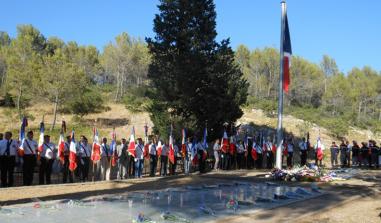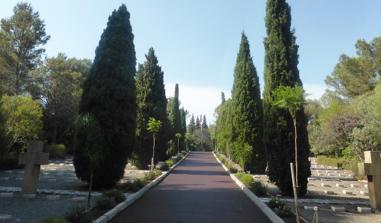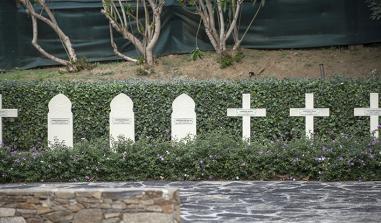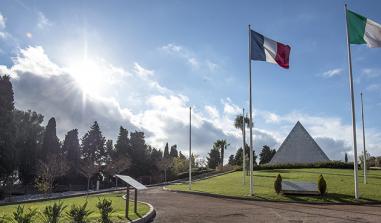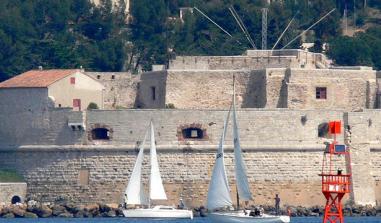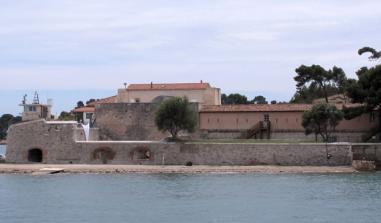Balaguier Fort
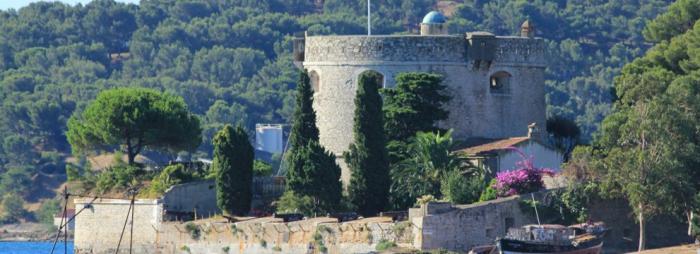
Le fort Balaguier. Source : ©Julien MAUCERI. http://www.ctoulon.com/
This 17th century fort was built to protect the entrance to Toulon harbour.
In the 16th century, Toulon harbour was surrounded by a system of defences designed primarily to protect access to it by sea and then - as the range of artillery increased - by land. After 1524, the commercial port of Toulon was protected by the "Big Tower" or Royal Tower. In 1634, Richelieu convinced Louis XIII to build another tower on Balaguier Point, opposite the Royal Tower, thus enabling the harbour entrance to be effectively locked. The aim was still to protect Toulon harbour, but more particularly, a small arsenal founded under Henri IV and which Richelieu, First Minister of the Navy, believed would grow in size. In 1679, Vauban was appointed to the Board for Fortifications.
The arsenal left the galley base at Marseilles and moved to the heart of the new dock. As part of the new design for fortifications, the canon tower of Balaguier was equipped with the ramparts, walls, accommodation and powder stores which give the fort its current appearance. In late August 1793, when the English entered Toulon, Balaguier became the target for the observers. Initially a refuge for sailors refusing to accept the English occupation, Balaguier went on to be occupied by coalition troops. The young republican artillery commander, Napoleon Bonaparte, understood the strategic importance of the location of the second element of the harbour protection. After two months of inconclusive fighting, his plan was finally accepted and, leading his troops into the attack by land, he took Balaguier Fort on 17th December 1793. The republican canons were then turned on the English fleet, which withdrew. After the Fachoda crisis, Balaguier Fort was rearmed one last time. Then, no longer of use, it was rented privately between the wars. Occupied by the Germans in 1942, it was liberated in 1944. After restoration, it has been a museum of maritime and local history since 1970.
Since 17 March 1975 it has been on the inventory of additional historical monuments. Balaguier Tower, or the "Little Tower" as opposed to the Royal or "Big Tower" was designed according to Richelieu's plans. The structure originally included a 19.5 m diameter canon tower. The basement contained a water cistern and magazines for powder and provisions. Access to the outside was via a drawbridge. This level consists of a vaulted room providing quarters for around forty men. The upper section of the tower was equipped with a canon platform protecting the harbour entrance from eight embrasures and a covered walkway whose parapet was broken by firing positions for close defence. On either side of the tower itself, batteries were built to provide grazing fire from parapets equipped with embrasures.
This building has been entrusted to the Ministry of Defence. France's Defence and Culture ministries signed an agreement to restore it, on 17 September 2005.
Ministère de la défense(Ministry of Defence) Secrétariat Général pour l'Administration (General Bureau for Administration) Direction de la Mémoire, du Patrimoine et des Archives (Remembrance, Heritage and Archives Department) 14 rue Saint-Dominique 00450 Armées E-mail: dmpa-sdace-bacm@sga.defense.gouv.fr
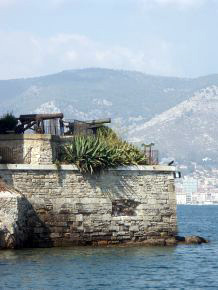
Balaguier Fort. Source: phototheque.picturefrom.fr
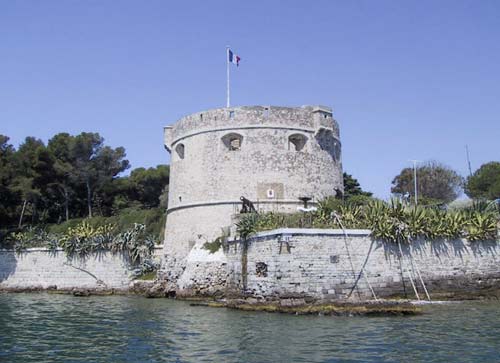
Balaguier Fort at La Seyne-sur-Mer. Source: www.netmarine.net
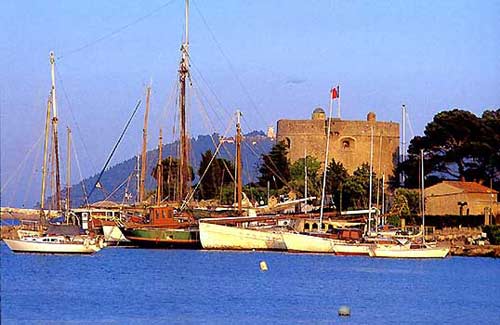
Balaguier Fort at La Seyne-sur-Mer. Source: phototheque.picturefrom.fr
Practical information
Esplanade Jacques Lebon 83500
La Seyne-sur-Mer
Adultes : 3 euros. Tarif réduit, étudiants, chômeurs, Rmistes et groupe (plus de 8 personnes) : 2 euros. Gratuit pour les enfants de moins de 5 ans.
Du 1er au 18 septembre et du 1er octobre au 30 juin, du mardi au dimanche de 9h à 12h et de 14h à 18h Du 1er juillet au 31 août, du mardi au dimanche de 10h à 12h et de 15h à 19h
Du 19 au 30 septembre




